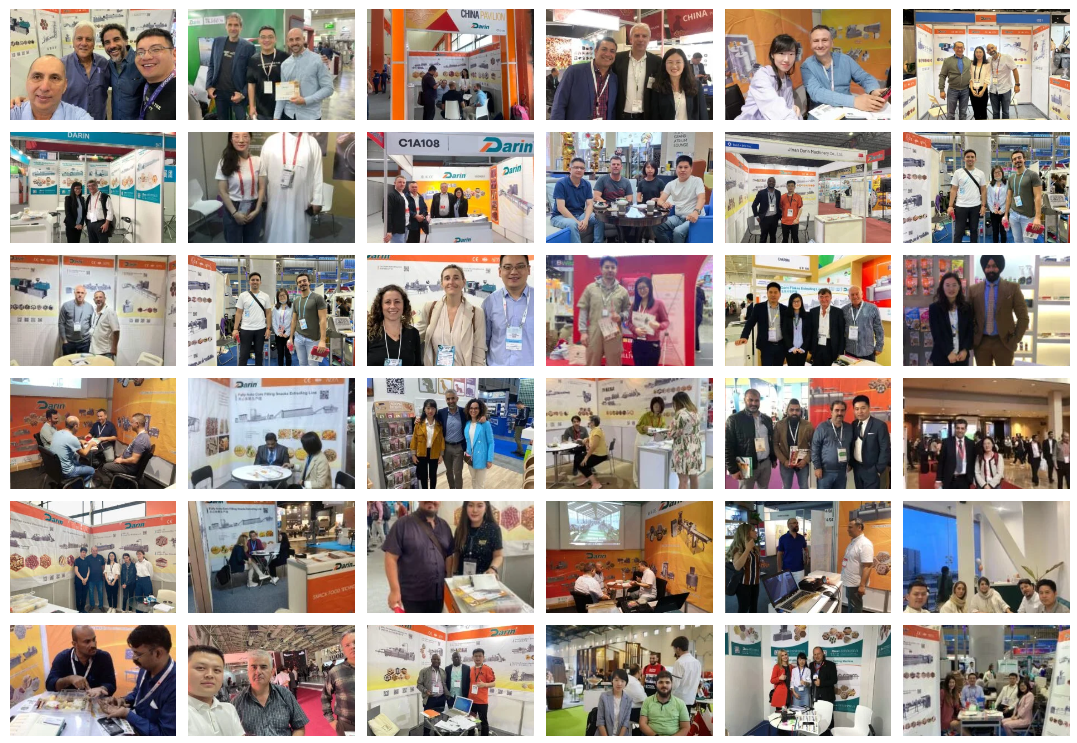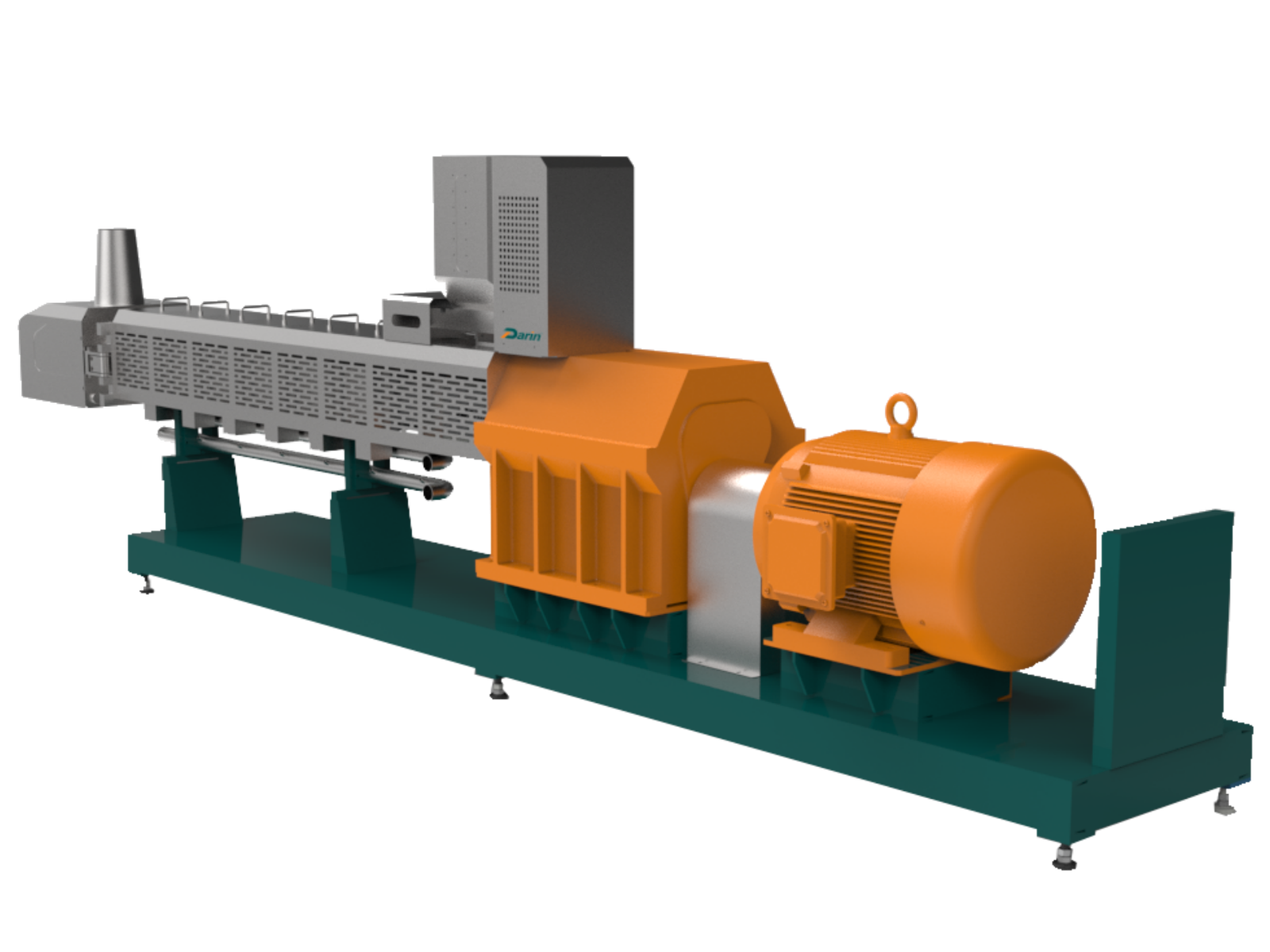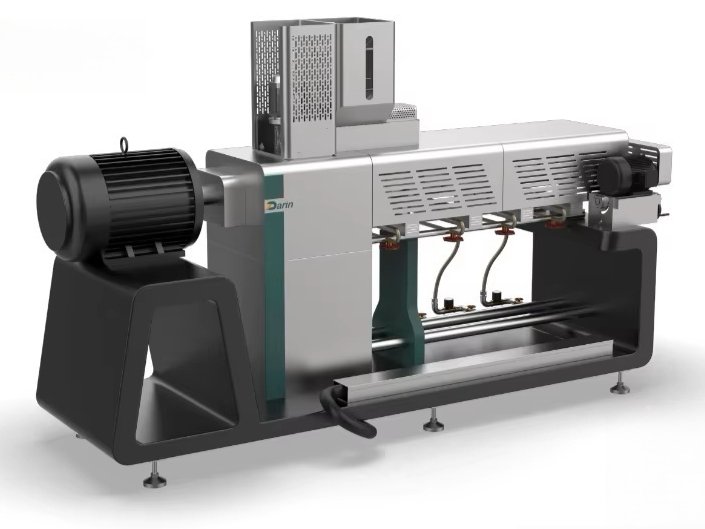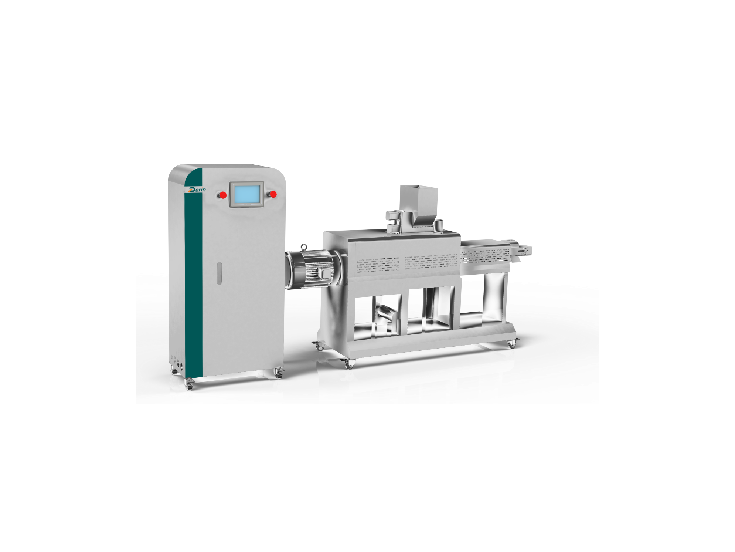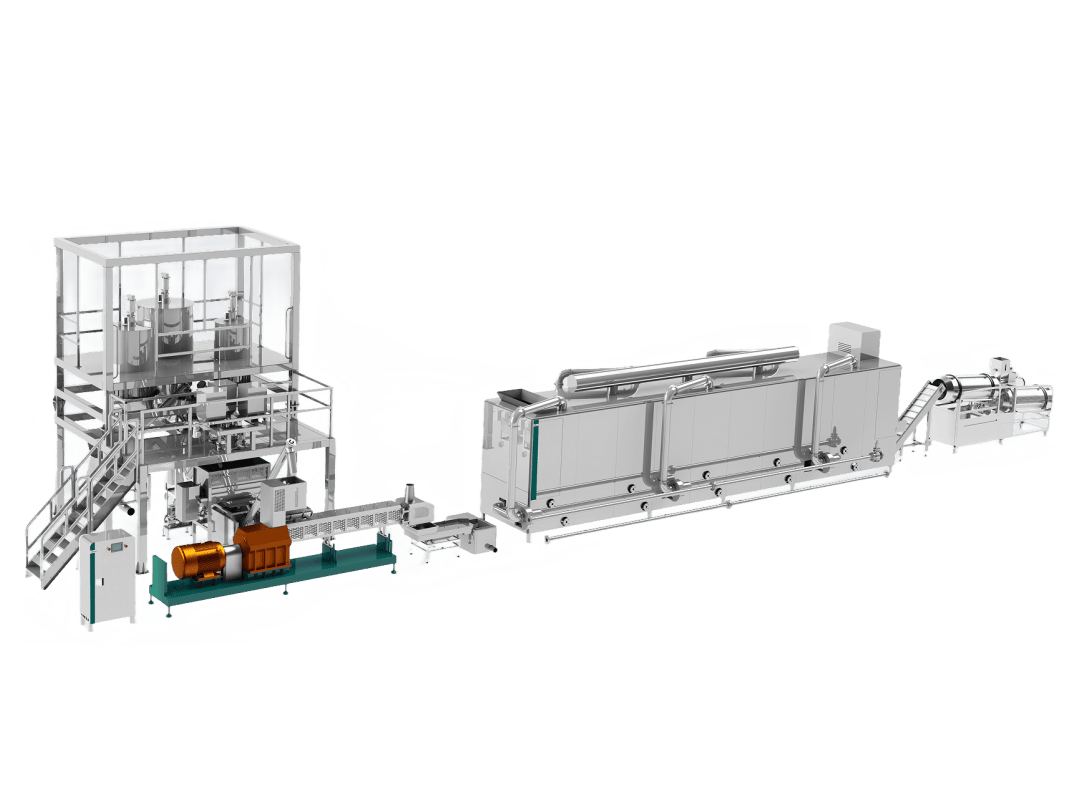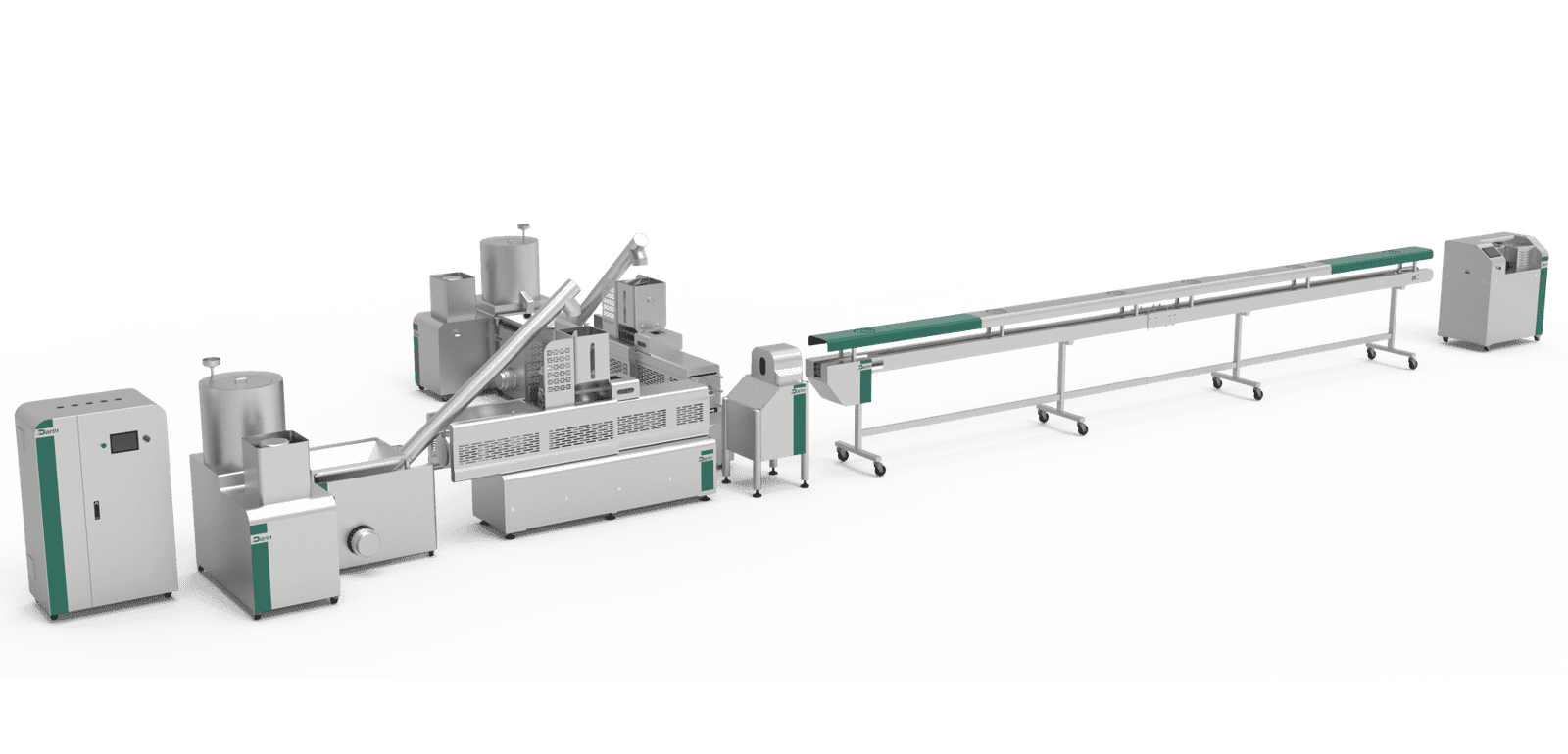
Pet owners today increasingly demand **natural, fresh, and nutritionally balanced pet food** that reflects the same quality as human meals. However, manufacturing pet fresh food at scale presents serious challenges: maintaining microbiological safety, extending shelf life without preservatives, and achieving consistent texture across batches. If these challenges are not met, products can spoil quickly, lose nutritional value, or fail safety audits. The solution lies in **scientifically designed production processes and hygienic machinery**, engineered for precise temperature control, gentle mixing, and airtight packaging.
**Pet fresh food is produced through a systematic process involving raw material selection, weighing, grinding, blending, cooking or pasteurization, and vacuum packaging under strict hygiene and temperature control. This ensures safe, nutrient-rich, and ready-to-serve products for pets, aligning with global food safety standards such as HACCP, ISO22000, and FDA regulations.**
Let’s explore the first stages in detail — where freshness begins, quality is built, and precision defines the foundation of every successful pet fresh food factory.
Pet fresh food can be made using the same extrusion system as dry kibble.False
Fresh food production does not involve extrusion or dehydration; it uses low-temperature cooking and cold-chain preservation to retain moisture and nutrients.
## Step 1. Raw Material Selection and Reception
The production of fresh pet food starts long before machinery begins — it starts at **ingredient sourcing**. Raw materials define nutritional value, texture, and flavor. Pet fresh food usually contains **65–80% fresh meat**, **10–25% vegetables or grains**, and **5–10% oils, minerals, and functional additives**.
### 1. Ingredient Categories
| Ingredient Type | Examples | Key Function | Quality Criteria |
| --------------------- | ------------------------------------ | ----------------------------- | ----------------------------- |
| **Animal Protein** | Chicken, beef, duck, salmon, lamb | Main protein and fat source | Fresh, low pH (<6.0), no odor |
| **Organ Meat** | Liver, heart, kidney | Vitamin A, iron, palatability | Bright color, firm texture |
| **Carbohydrates** | Rice, peas, potato, barley | Energy and fiber | Clean, no mold |
| **Vegetables/Fruits** | Carrot, pumpkin, spinach, apple | Vitamins, fiber | Fresh, no rot |
| **Fats/Oils** | Salmon oil, chicken fat, linseed oil | Energy, omega fatty acids | Clear, non-rancid |
| **Additives** | Vitamins, taurine, minerals | Nutrition balance | Certified feed-grade |Upon delivery, raw materials are subject to **three critical inspections**:* **Visual inspection** – no discoloration or foreign matter.
* **Temperature check** – below 4°C (fresh) or −18°C (frozen).
* **Traceability record** – supplier lot number and origin must be logged.**Darin Machinery recommends** integrating an **automated weighing and barcode tracking system** at the reception area. This ensures every batch can be traced throughout production.### 2. Storage Conditions* **Fresh meats:** 0–4°C cold room, ≤48 hours before processing.
* **Frozen meats:** −18°C freezer, ≤3 months.
* **Vegetables:** 2–8°C with humidity control.
* **Oils and supplements:** 15–25°C in dark, dry storage.Maintaining temperature integrity here ensures both microbial safety and nutritional retention — the first critical control point (CCP) in HACCP planning.## Step 2. Grinding and Pre-ProcessingThe next step is **size reduction**, which improves mixing uniformity and product texture. Raw meats, bones, and vegetables must be reduced into small, uniform particles (typically 3–8 mm) before blending.### 1. Meat GrindingIndustrial meat grinders (e.g., *Darin DRG-160*) are used for coarse or fine grinding. The process should be done under chilled conditions (<10°C) to prevent bacterial growth and fat oxidation.| Grinding Plate Size | Target Texture | Application |
| ------------------- | -------------- | ------------------- |
| 8 mm | Coarse chunks | Chunky recipes |
| 5 mm | Standard mince | Pâté-style food |
| 3 mm | Fine grind | Emulsified formulas |**Key parameters:*** **Input temp:** below 4°C.
* **Throughput:** 500–2000 kg/h depending on model.
* **Material:** SUS304 stainless steel with CIP capability.
Grinding temperature has no effect on final product quality.False
Grinding above 10°C promotes fat oxidation and microbial growth, reducing freshness and shelf life.
Pet food mixing can be done manually with basic tools.False
Manual mixing causes uneven distribution of nutrients, increases contamination risk, and cannot meet industrial food safety standards.
Pet fresh food requires sterilization at 121°C like canned food.False
Fresh food undergoes mild pasteurization, not high-temperature sterilization, to preserve nutrients and sensory quality.
 A well-arranged display of various dry pet food ingredients on a kitchen table.
A well-arranged display of various dry pet food ingredients on a kitchen table.After cooking and pasteurization, the focus of pet fresh food manufacturing shifts from thermal processing to hygienic packaging and preservation. At this stage, even minor handling errors can compromise the product’s safety, freshness, or shelf stability. The key challenge lies in minimizing microbial exposure while maintaining the natural aroma and moist texture that consumers value.
From filling and portioning to sealing and cold storage, the post-cooking phase of pet fresh food production is about precision, sanitation, and time control. Each step must happen rapidly under low temperatures and cleanroom conditions to ensure the final product stays safe, nutritious, and visually appealing.
Step 6. Portioning and Filling
Portioning defines the product’s retail format and influences cost, convenience, and consumer perception. Whether packed in pouches, trays, or sausage tubes, accuracy and speed are essential.
1. Portion Control
Accurate dosing ensures uniform nutrition and consistent weight — reducing product giveaway and maintaining profitability. Industrial multi-head weighers or servo-driven piston fillers are used for this stage.
| Packaging Type | Common Size | Portioning Method | Typical Application |
|---|---|---|---|
| Vacuum pouch | 100–500 g | Servo piston filler | Retail, home delivery |
| MAP tray | 200–400 g | Multi-head weigher + tray filler | Premium retail |
| Sausage tube (chub) | 500 g–2 kg | Hydraulic piston stuffer | Breeder, catering lines |
| Bulk bag | 5–10 kg | Screw filler | Foodservice, export |
2. Sanitation Requirements
Filling is a high-risk CCP (Critical Control Point) under HACCP. The filling zone should be maintained at:
- Ambient temperature: below 15°C
- Relative humidity: below 70%
- Air cleanliness: ISO Class 7 or better (HEPA filtered)
Operators must wear gloves, masks, and sanitized clothing. Automatic clean-in-place (CIP) systems should be installed for hopper and filler washing.
3. Darin Machinery’s Filling Solutions
Darin’s DRF-300 Servo Vacuum Filler integrates weighing, filling, and sealing with PLC control, ensuring ±1% accuracy and continuous production up to 3,000 packs/hour.
Key parameters:
- Filling temperature: below 45°C
- Filling pressure: 0.2–0.4 MPa
- Hopper volume: 100 L
- Material: SUS304, food-grade seals
Portioning can be done at room temperature without risk.False
Filling warm product at ambient temperature allows bacterial growth; low-temperature environments below 15°C are essential for safety.
Step 7. Vacuum Sealing and Cooling
After portioning, oxygen control becomes the next major factor in extending shelf life. Oxygen promotes both microbial growth and oxidation, leading to spoilage and discoloration. Hence, vacuum or modified atmosphere packaging (MAP) is applied immediately.
1. Vacuum Sealing
Vacuum packaging removes up to 99% of air, ensuring minimal oxygen exposure. For pasteurized pet fresh food, this can extend refrigerated shelf life from 10 to 30 days.
Recommended vacuum parameters:
- Vacuum pressure: −0.095 MPa
- Sealing temperature: 140–160°C
- Sealing time: 1.5–2.5 s
- Cooling time: 3 s
| Packaging Material | Oxygen Permeability (cc/m²/day) | Application |
|---|---|---|
| Nylon/PE (PA/PE) | <20 | Standard pouch |
| PET/AL/PE | <10 | Long-life pouch |
| EVOH tray | <5 | Premium MAP tray |
Darin’s DRV-600 Continuous Belt Vacuum Sealer combines vacuum and sealing chambers with automatic conveyor feed. The system is integrated with temperature and vacuum sensors for consistent sealing quality.
2. Modified Atmosphere Packaging (MAP)
For higher-end retail products, oxygen is replaced with a protective gas mixture:
- 70% N₂ (Nitrogen) – inert filler gas
- 30% CO₂ (Carbon dioxide) – bacteriostatic effect
This method helps preserve color, texture, and aroma without using preservatives.
MAP Control Settings:
- Gas flushing pressure: 0.3–0.4 MPa
- Residual oxygen: <0.5%
- Temperature: <10°C during operation
MAP packaging is only used for human food.False
MAP is widely applied in premium pet food to enhance shelf life and freshness, especially in export and e-commerce distribution.
3. Rapid Cooling
Immediately after sealing, product core temperature must drop from ~70°C to below 5°C within 60 minutes to prevent bacterial proliferation (Listeria, Salmonella, E. coli).
This is achieved through blast chillers or cooling tunnels.
Cooling system options:
- Air blast chiller: forced cold air (−2°C, 2–3 hours)
- Water immersion cooler: circulating cold water, faster but less common
- Glycol cooling tunnel: continuous, automated for large-scale plants
| Cooling Type | Efficiency | Suitable Capacity | Notes |
|---|---|---|---|
| Air blast | ★★★ | 0.5–2 t/h | Hygienic and flexible |
| Water immersion | ★★ | <1 t/h | Risk of contamination |
| Glycol tunnel | ★★★★★ | >2 t/h | Best for automation |
Critical parameter:
- Final product temp ≤ 5°C (monitored with calibrated probes).
Step 8. Cold Storage and Logistics
Once sealed and cooled, pet fresh food must be maintained within a strict cold chain until consumption. This ensures microbial stability and prevents texture degradation.
1. Storage Systems
| Storage Mode | Temperature | Typical Shelf Life | Application |
|---|---|---|---|
| Chilled | 0–4°C | 15–45 days | Retail and local delivery |
| Frozen | −18°C | 6–12 months | Export and bulk storage |
| Deep frozen | −25°C | Up to 18 months | Long-term backup stock |
Warehouse design includes:
- Insulated walls (100–150 mm PU panels)
- Air curtains at entry points
- Automatic data loggers for temperature tracking
- FIFO (First-In, First-Out) inventory control
Cold chain management is optional for fresh pet food.False
Cold chain is mandatory; without it, microbial growth and nutrient loss occur rapidly, reducing shelf life and safety.
2. Distribution Logistics
- Refrigerated trucks maintain 0–4°C for local distribution.
- Insulated foam boxes with dry ice or gel packs are used for online orders.
- GPS temperature sensors ensure transparency for logistics auditing.
Darin’s recommendation: integrate a temperature traceability system that logs data from production to final retailer. QR code labeling on each package can display temperature history, boosting consumer trust.
3. Storage Energy Optimization
Cold storage consumes up to 40% of plant energy. To improve efficiency:
- Use variable frequency compressors.
- Recover waste heat from refrigeration units.
- Implement automatic defrost cycles.
- Optimize rack layout to maximize airflow.
| Optimization Method | Energy Savings | Notes |
|---|---|---|
| Variable frequency control | 10–15% | Adjusts compressor load dynamically |
| Waste heat recovery | 5–8% | Used for preheating water |
| Efficient insulation | 5–10% | PU panels, sealed joints |
| LED lighting | 3–5% | Reduces heat load |
Step 9. Quality Control and Food Safety Testing
Quality control (QC) defines whether the product meets both nutritional and safety standards. It is a continuous process involving laboratory testing, visual inspection, and record management.
1. HACCP Critical Control Points
| Process Stage | Critical Parameter | Control Method | Corrective Action |
|---|---|---|---|
| Grinding | Temperature <10°C | Continuous monitoring | Adjust chiller |
| Cooking | Core temp ≥75°C | Thermocouple probes | Re-cook batch |
| Filling | Room temp <15°C | Thermo-hygrometer | Halt and sanitize |
| Cooling | Core temp ≤5°C | Digital probe | Re-chill |
| Storage | ≤4°C | Data logger | Isolate affected lot |
HACCP certification is optional for export pet food factories.False
HACCP is a mandatory requirement in most countries for both human and pet food exports.
2. Laboratory Testing
Each batch undergoes microbiological, physicochemical, and nutritional analysis:
| Test Item | Target Range | Method | Frequency |
|---|---|---|---|
| Total plate count | <10⁵ CFU/g | ISO 4833 | Every batch |
| Coliform | <10² CFU/g | ISO 4832 | Every batch |
| Salmonella | Absent | ISO 6579 | Each lot |
| Moisture | 65–75% | Oven drying | Weekly |
| pH | 6.0–6.5 | pH meter | Each batch |
| Protein | 10–18% | Kjeldahl | Weekly |
| Fat | 5–12% | Soxhlet extraction | Weekly |
Additionally, sensory evaluation (color, texture, aroma) is performed by trained QC personnel under standard lighting.
3. Nutrient and Label Verification
Fresh pet food must comply with AAFCO (USA) or FEDIAF (EU) nutritional guidelines. Periodic testing verifies label claims such as:
- “High protein” (>12%)
- “Omega-3 enriched” (>0.5%)
- “Grain-free” (no cereal ingredients detected)
4. Data Traceability and Record Keeping
All QC data must be digitally stored and linked to batch codes. Darin Machinery offers PLC + MES integration, allowing automatic data logging for traceability, accessible via cloud dashboards.
Benefits:
- Instant product recall capability
- Compliance with ISO22000 documentation
- Improved transparency for audits
Example: Microbial Count Reduction Over Process Steps
| Process Step | TPC (CFU/g) | Reduction Ratio | Primary Control |
|---|---|---|---|
| Raw Material | 10⁷ | – | Incoming control |
| After Cooking | 10³ | 99.99% | Temperature control |
| After Cooling | 10⁴ | +1 log increase | Hygiene control |
| Final Product | <10⁵ | Compliant | Sealing & storage |
This demonstrates that temperature and sanitation are the most decisive factors for ensuring safe and long-lasting fresh pet food.

The previous section explained packaging, cooling, and safety testing — now, we turn to the **core of industrial innovation**: how recipes are developed, how production lines are configured, and how manufacturers maintain consistency across thousands of batches. In modern pet food production, **recipe flexibility**, **automation**, and **data-driven control** determine both profitability and brand reputation.
**Developing and producing high-quality pet fresh food requires scientific formulation, precision machinery, and real-time process monitoring. From R&D to scaling, each stage must balance nutritional value, texture, safety, and cost-efficiency.**
## Step 10. Recipe Development and Customization
Recipe development lies at the heart of every successful pet fresh food brand. Unlike dry kibble, which is processed through extrusion, fresh food retains its moisture, flavor, and visual identity — so ingredient balance and visual appeal are equally critical.
### 1. Nutritional Design by Pet Category
| Pet Type | Protein (%) | Fat (%) | Moisture (%) | Fiber (%) | Energy (kcal/100g) |
| ----------- | ----------- | ------- | ------------ | --------- | ------------------ |
| Puppy | 12–16 | 7–10 | 70–75 | 1–3 | 160–190 |
| Adult Dog | 10–14 | 5–8 | 65–75 | 1–2 | 130–160 |
| Senior Dog | 8–12 | 4–6 | 70–78 | 2–4 | 120–150 |
| Cat (Adult) | 12–18 | 8–12 | 65–72 | 0.5–2 | 150–180 |
Each formula must comply with **AAFCO (US)** or **FEDIAF (EU)** guidelines for essential nutrients, ensuring that vitamin, mineral, and amino acid levels meet the required standards.
Pet fresh food recipes can omit essential vitamins and taurine for cats.False
Cats require taurine and specific vitamins that must be added to maintain vision, heart, and immune health. Omission leads to deficiency.
### 2. Palatability and Sensory Considerations
Pet fresh food should not only meet nutritional needs but also **appeal to pets’ natural preferences**. Darin’s R&D partners use **palatability panels** with 20–30 dogs or cats to test acceptance rates, smell, and texture.
Palatability enhancers such as **hydrolyzed liver powder** or **fish sauce extract** are often added at 0.5–2.0%. Fat coating or gravy layers increase acceptance for picky pets.
### 3. Customization for Market Segments
| Segment | Features | Example Ingredients |
| ------------------- | -------------------------------- | ---------------------------- |
| **Grain-free** | For allergy-sensitive pets | Chicken, peas, pumpkin |
| **Weight control** | Low-fat, high-fiber | Turkey, broccoli, brown rice |
| **Senior diet** | Easily digestible, joint support | Salmon, carrot, glucosamine |
| **Premium gourmet** | Human-grade ingredients | Beef filet, spinach, quinoa |
Customization allows pet food manufacturers to **differentiate brand identity** and meet niche market demands (organic, vegan, functional health, etc.).
## Step 11. Equipment Selection and Production Line Configuration
At Darin Machinery, the philosophy is simple: **freshness requires precision**. A well-designed pet fresh food production line integrates automation, safety, and hygiene into every operation — from grinding to packing.
### 1. Typical Line Configuration
| Section | Core Equipment | Function |
| ------------------------ | ---------------------------------------- | ------------------------------ |
| Raw Material Preparation | Frozen Meat Grinder, Vegetable Cutter | Cutting, mincing, washing |
| Mixing & Emulsifying | Twin Shaft Mixer, Vacuum Emulsifier | Homogenization |
| Cooking & Pasteurizing | Steam Kettle, Tube Pasteurizer | Thermal treatment |
| Portioning & Sealing | Servo Filler, Vacuum Sealer, MAP Machine | Packaging and sealing |
| Cooling & Storage | Blast Chiller, Cold Room | Rapid cooling and preservation |
| Quality Control | Laboratory Instruments | Testing and traceability |
**Automation Layout Example (Flow Direction):**
Receiving → Grinding → Mixing → Emulsifying → Cooking → Filling → Sealing → Cooling → Storage → QC
### 2. Darin Machinery Recommended Models
| Equipment | Model | Capacity (kg/h) | Key Features |
| ------------- | -------- | --------------- | ------------------------------------- |
| Meat Grinder | DRG-160 | 500–2000 | Double knife, low-temp control |
| Mixer | DRB-500 | 500–1500 | Twin-shaft paddles, nitrogen flushing |
| Pasteurizer | DRP-1000 | 500–2000 | PLC control, uniform heating |
| Vacuum Sealer | DRV-300 | 1000 packs/h | Automatic belt sealing |
| Blast Chiller | DRC-200 | 200–1000 | Rapid cooling to 4°C within 1 h |
| Cold Storage | DRS-500 | Modular | Real-time temperature monitoring |
All Darin Machinery systems are built with **SUS304 stainless steel**, **CE/ISO-certified**, and equipped with **CIP automatic cleaning** to ensure hygiene and reduce labor.
Using standard food processing machines is sufficient for pet food production.False
Pet food production requires specialized sanitary design with animal-protein safety controls, anti-contamination features, and traceability compliance.
### 3. Integration and Scalability
Darin’s engineering team provides turnkey services including:
* **Layout Design:** 3D CAD simulation for material flow.
* **Utility Diagram:** Steam, air, and water systems.
* **PLC Integration:** Centralized operation via touchscreen.
* **Capacity Upgrade:** Modular design allows future expansion.
Automation minimizes manual handling, improves consistency, and reduces contamination risk. A 1-ton/hour line typically requires only **4–6 operators**.
## Step 12. Automation, Traceability, and Digital Control
The era of smart manufacturing has arrived — and pet food production is no exception. Digital systems transform production from manual oversight to **data-driven precision**.
### 1. PLC & SCADA Integration
Programmable Logic Controller (PLC) systems manage temperature, pressure, and timing for every unit. Data is visualized through **SCADA dashboards**, allowing operators to adjust conditions in real-time.
| Parameter | Control Range | Function |
| --------------- | ------------- | ------------------ |
| Mixing Speed | 20–60 rpm | Uniform blending |
| Cooking Temp | 70–90°C | Pasteurization |
| Vacuum Pressure | −0.09 MPa | Air removal |
| Cooling Temp | 0–4°C | Shelf-life control |
Automation systems are optional in pet food production.False
Automation improves food safety, consistency, and traceability — critical for passing HACCP and export certifications.
### 2. Digital Traceability
Each batch is assigned a **barcode or QR code** linked to ingredient source, operator ID, and production date. Consumers or regulators can scan codes for full transparency.
Darin’s MES (Manufacturing Execution System) software stores:
* Batch formulation records
* Real-time sensor data
* Quality control test results
* Maintenance logs
This ensures compliance with ISO22000 and FDA FSMA traceability requirements.
### 3. Remote Monitoring and Predictive Maintenance
IoT-enabled equipment allows remote access and diagnostics. Predictive algorithms analyze vibration, motor current, and temperature to forecast equipment failures before they occur — minimizing downtime.
| Feature | Benefit |
| -------------------------- | ---------------------------- |
| Remote alarm notifications | Immediate operator response |
| Cloud-based data backup | 24/7 audit access |
| Energy monitoring | Optimized resource usage |
| Predictive maintenance | 15–20% reduction in downtime |
### 4. Data-Driven Process Optimization
Collected production data (temperature, fill weight, energy use) can be analyzed to optimize yields and reduce waste. Manufacturers using digital control achieve **up to 10–15% efficiency improvement** compared to semi-manual lines.
## Step 13. Common Challenges and Industrial Solutions
Even with advanced systems, pet fresh food factories face operational challenges — often balancing cost, safety, and product stability. Darin Machinery’s engineering experience helps identify root causes and practical solutions.
| Challenge | Root Cause | Industrial Solution |
| ---------------------------------- | ------------------------------------ | -------------------------------------------------------------- |
| **Short shelf life** | High residual oxygen or weak sealing | Use high-barrier films, increase vacuum pressure to −0.095 MPa |
| **Texture separation (fat-water)** | Insufficient emulsification | Install colloid mill or adjust fat ratio (max 10%) |
| **Overcooking nutrient loss** | Long holding time | Optimize heating curve; use PID temperature control |
| **Microbial contamination** | Poor hygiene or delayed cooling | Implement faster blast chilling, CIP cleaning between shifts |
| **Uneven portion weights** | Manual filling errors | Upgrade to servo piston filler or multi-head weigher |
| **High production costs** | Excess labor or energy | Increase automation, schedule batch production |
| **Label compliance issues** | Inconsistent nutrient values | Standardize lab testing frequency (weekly) |
### Case Study Example
A South Korean client operating a 1.2 ton/hour Darin fresh food line reported:
* **25% lower energy use** via variable-frequency chillers
* **30% less labor cost** after automating packaging
* **40-day refrigerated shelf life**, up from 25 days
Such improvements came from **automation upgrades** and **process validation** led by Darin engineers.
### Example Energy Consumption Breakdown
| Process | Energy Source | Average Usage (kWh/ton) | Notes |
| ----------------- | ------------- | ----------------------- | ------------------------- |
| Grinding & Mixing | Electric | 18–25 | Variable with viscosity |
| Cooking | Steam | 50–70 | Dependent on holding time |
| Cooling | Electric | 30–50 | Major consumption |
| Packaging | Electric | 15–20 | Vacuum pumps & sealers |
| Cold Storage | Electric | 40–60 | Depends on insulation |
**Optimization tip:** total energy cost can be reduced 15–20% by heat recovery and proper equipment insulation.
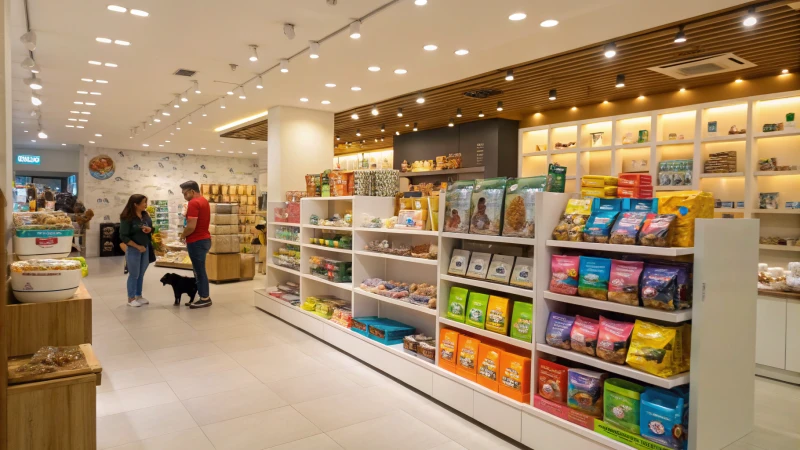 A lively interior of a pet store filled with premium pet products.
A lively interior of a pet store filled with premium pet products.
As pet food markets evolve, manufacturers are not just competing on product quality — they are competing on efficiency, compliance, sustainability, and innovation. After understanding the technological foundation of fresh pet food manufacturing, it’s time to explore how businesses can make production profitable, compliant, and future-ready.
In this final section, we’ll analyze production costs, factory design, hygiene standards, sustainability practices, and emerging technologies — helping manufacturers build reliable, export-ready pet fresh food plants with Darin Machinery’s integrated engineering approach.
Step 14. Cost and Profitability Analysis
A successful pet fresh food project requires a realistic assessment of investment and operating costs. The economics depend on capacity, automation level, labor costs, energy prices, and raw materials.
1. Typical Cost Structure
| Cost Category | Share of Total (%) | Key Components |
|---|---|---|
| Raw Materials | 45–60 | Meat, vegetables, oils, additives |
| Labor | 10–15 | Operators, QC, packaging staff |
| Energy & Utilities | 8–12 | Steam, cooling, electricity |
| Packaging Materials | 8–10 | Pouches, trays, film |
| Maintenance & Depreciation | 5–8 | Equipment upkeep |
| Logistics & Cold Chain | 5–8 | Storage, distribution |
| Administration & QC | 2–4 | Certifications, testing |
2. Example Financial Projection
| Parameter | Small Line | Medium Line | Large Line |
|---|---|---|---|
| Capacity | 300 kg/h | 1 ton/h | 2 ton/h |
| Investment (USD) | 80,000–120,000 | 200,000–350,000 | 500,000+ |
| Production Cost/kg | $1.5–2.0 | $1.2–1.6 | $1.0–1.3 |
| Selling Price/kg | $2.2–2.8 | $2.0–2.6 | $1.8–2.3 |
| Gross Margin | 30–45% | 35–50% | 40–55% |
| ROI Period | 18–24 months | 12–18 months | <12 months |
3. Strategies to Increase Profitability
- Use local meat suppliers to reduce raw material cost.
- Optimize energy with heat recovery systems.
- Adopt automation to reduce labor.
- Offer private label manufacturing for brand clients.
- Diversify packaging (100 g mini-packs to 2 kg chubs).
Pet fresh food manufacturing requires continuous financial losses due to cold-chain cost.False
With efficient design and automation, refrigerated pet food plants achieve 30–50% gross margin and full ROI within 1–2 years.
Step 15. Hygiene, Safety, and Regulatory Compliance
Fresh pet food production follows the same safety logic as human food: control contamination, manage temperature, and document every step.
1. Core Standards
| Standard | Region | Scope |
|---|---|---|
| HACCP | Global | Hazard Analysis & Critical Control Points |
| ISO 22000 | Global | Food Safety Management System |
| FDA FSMA | USA | Preventive Controls for Animal Food |
| FEDIAF | EU | Nutritional and labeling standards |
| GB/T 27341-2009 | China | Pet food hygiene requirements |
2. Plant Sanitation Requirements
- Material flow: Clean-to-dirty direction only.
- Personnel hygiene: Shoe sanitizers, hand wash, clothing control.
- Air quality: HEPA filtration, positive air pressure in clean zones.
- CIP (Clean-in-Place): Automatic cleaning for mixers, cookers, pipes.
- UV sterilization: Air and water systems for microbial control.
Example Sanitation Schedule
| Area | Cleaning Frequency | Method |
|---|---|---|
| Grinder & Mixer | Every 8 h | CIP + hot water rinse |
| Filling Zone | Every 4 h | Wipe + sanitizer spray |
| Packaging Room | Daily | Floor disinfection |
| Cold Storage | Weekly | Defrost + floor clean |
Hygiene systems can be skipped for chilled pet food since it’s refrigerated.False
Cold storage slows but does not eliminate bacteria; sanitation remains essential for safe production.
3. Documentation and Certification
Regulatory compliance requires full documentation:
- Batch records (ingredients, lot numbers, operators)
- Temperature logs for each step
- Equipment cleaning records
- Microbiological test certificates
Audits by third parties (SGS, BV, or local inspection) are often mandatory before export.
Step 16. Factory Layout and Facility Design
An efficient layout ensures smooth material flow, minimizes cross-contamination, and reduces labor. Darin Machinery designs complete 3D layout simulations to optimize workflow.
1. Typical Plant Layout
- Raw Material Receiving Zone
- Cold Storage (0–4°C / −18°C)
- Cutting & Grinding Area
- Mixing & Emulsification Area
- Cooking & Pasteurization Area
- Filling & Sealing Zone
- Cooling Tunnel / Blast Chiller
- Cold Storage Room
- Laboratory (QC)
- Packaging & Dispatch Area
Flow Principle:
→ Clean Zone → Semi-Clean → Post-Cooking → Packaging → Cold Storage
2. Utility Systems
| Utility | Function | Standard |
|---|---|---|
| Steam | Heating for cookers | 0.6–0.8 MPa |
| Compressed Air | Pneumatic automation | 0.4–0.6 MPa |
| Water Supply | Cooling, cleaning | Filtered, UV sterilized |
| Drainage | Wastewater removal | Stainless channel drains |
| Power | Motors, automation | 380V/50Hz 3-phase |
3. Space Requirements
| Line Capacity | Recommended Area (m²) | Typical Workforce |
|---|---|---|
| 300 kg/h | 250–300 | 3–5 |
| 1 ton/h | 500–700 | 6–8 |
| 2 ton/h | 800–1000 | 10–12 |
Pet food production lines can operate without designated clean zones.False
Clean zones prevent cross-contamination and are mandatory for compliance with ISO22000 and HACCP.
Step 17. Sustainability and Environmental Management
Modern consumers expect not only healthy food for their pets but also environmentally responsible manufacturing. Darin Machinery incorporates energy-saving and waste-reduction systems in its plant designs.
1. Energy Efficiency
| System | Sustainability Solution | Benefit |
|---|---|---|
| Steam System | Heat recovery exchangers | 10–15% fuel saving |
| Cooling | Variable-frequency compressors | 8–12% energy reduction |
| Lighting | LED + motion sensors | Lower heat, power savings |
| Air Filtration | Smart airflow control | Balanced air pressure, reduced loss |
2. Waste Management
- Solid Waste: Collected meat trimmings can be rendered or sold as animal feed ingredients.
- Wastewater: Filter and treat before discharge (oil-water separation).
- Packaging: Use recyclable or biodegradable films (PLA, PET-free).
3. Carbon Footprint Optimization
Automation and efficient layout reduce energy use per kilogram of product. A standard Darin line emits up to 20% less CO₂ than comparable manual systems.
Sustainability efforts in pet food production reduce efficiency.False
Energy-efficient and waste-reducing systems lower operational cost and increase overall profitability while protecting the environment.
Step 18. Future Innovations in Pet Fresh Food
The fresh pet food industry is rapidly evolving. Manufacturers adopting next-generation technologies are already gaining an advantage.
1. High-Pressure Processing (HPP)
A non-thermal preservation method that inactivates pathogens using 600 MPa pressure, extending shelf life while keeping nutrients intact.
2. Smart Labeling
Packaging integrated with freshness sensors or QR codes that show cold-chain compliance in real time.
3. Functional and Personalized Nutrition
AI-assisted formulation tools can design recipes tailored to pet breed, age, and health condition — enabling custom meal services.
4. Alternative Proteins
Plant-based proteins, insects (black soldier fly larvae), and lab-cultured meat are emerging as sustainable protein sources.
5. Robotics and Vision Inspection
Robotic arms now handle filling and packaging with precision, while cameras verify seal integrity, labeling accuracy, and product uniformity.
| Innovation | Description | Benefit |
|---|---|---|
| HPP | Non-thermal pathogen control | Shelf life + nutrients |
| AI Formulation | Data-based recipe optimization | Personalized diets |
| Smart Sensors | Temperature/freshness monitoring | Transparency |
| Robotics | Automated packaging | Labor reduction |
| Alt Proteins | Insect or plant-based | Sustainability |
Step 19. Case Study: Complete Turnkey Project
A client in Europe built a 1-ton/hour Darin pet fresh food factory in 2024.
Highlights:
- Fully automated line with PLC + SCADA system.
- Recipe flexibility for 12 SKUs (dog & cat).
- 40-day refrigerated shelf life.
- ISO22000 + HACCP certified facility.
- 38% energy reduction after heat recovery installation.
Outcome:
Production ROI achieved in 13 months, with exports to 7 countries including Germany and Japan.
Step 20. Key Takeaways
| Focus Area | Core Insight |
|---|---|
| Ingredient Quality | Use fresh, traceable materials with verified suppliers. |
| Temperature Control | Maintain <10°C pre-cooking, ≥75°C cooking, ≤5°C cooling. |
| Hygiene & Automation | Invest in CIP, PLC, and stainless-steel design. |
| Packaging & Cooling | Vacuum or MAP sealing + blast chilling mandatory. |
| Compliance | HACCP, ISO22000, FEDIAF, or FDA FSMA essential. |
| ROI | 1–2 years with optimized layout and automation. |
| Sustainability | Energy recovery and eco-packaging lower costs. |
Final Thoughts
Producing pet fresh food isn’t just about feeding pets — it’s about combining food science, engineering precision, and sustainability. A successful production line balances freshness, safety, and efficiency through carefully controlled stages — from raw material reception to refrigerated delivery.
With Darin Machinery’s integrated technology, global clients can establish high-efficiency, hygienic, and automated pet fresh food plants that meet international standards and deliver long-term profitability.
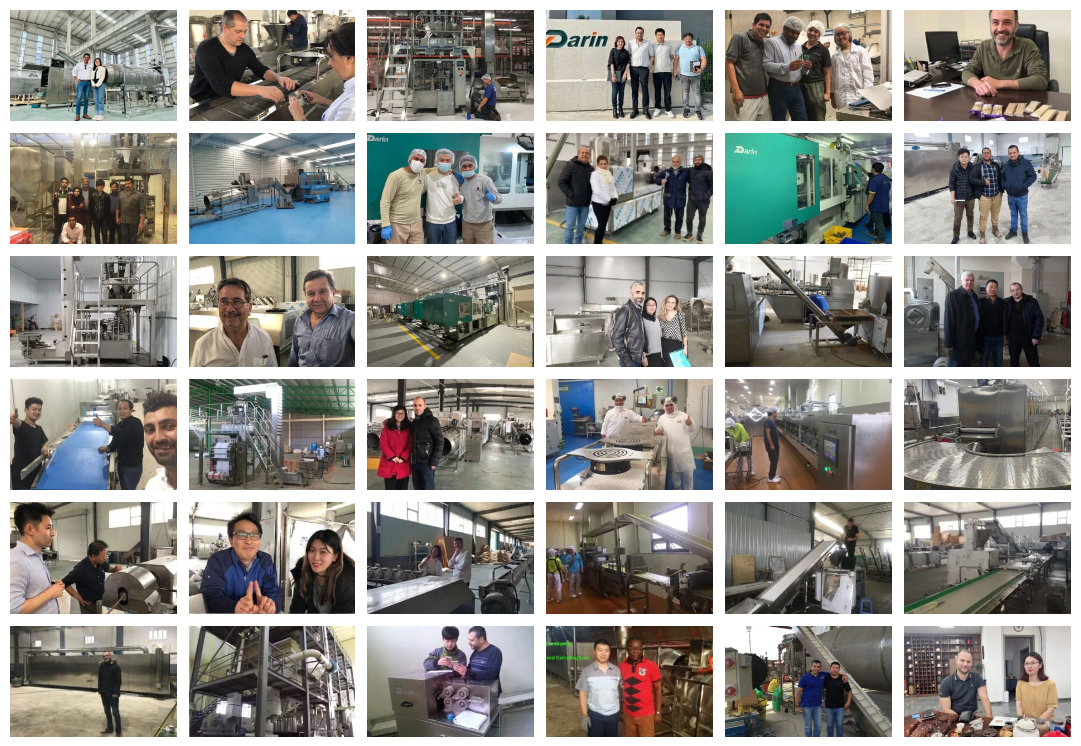
👉 Build Your Fresh Pet Food Production Line with Darin Machinery
At Darin Machinery, we design and supply complete turnkey solutions for pet fresh food — from R&D formulation and layout design to equipment manufacturing, installation, and training.
Whether you’re launching a new brand or upgrading existing facilities, our engineers will tailor a system that delivers quality, compliance, and profitability.
📩 Email: darin4@darin.cn
🌐 Website: www.petreatsmachine.com
📞 WhatsApp: +86 156 5000 7983
Darin Machinery — Engineering Nutrition. Delivering Freshness.
